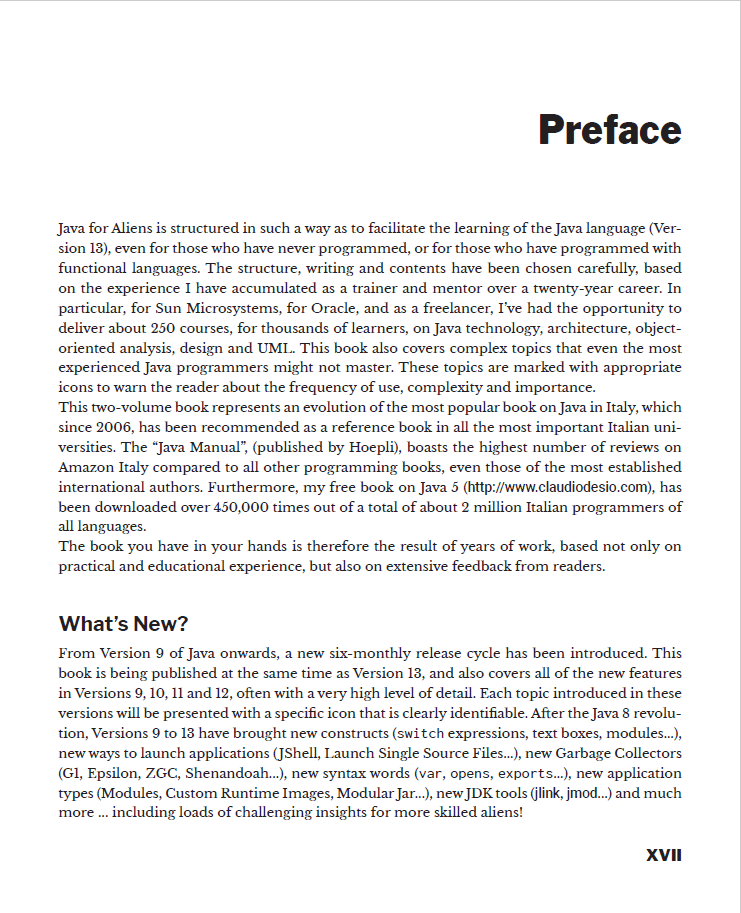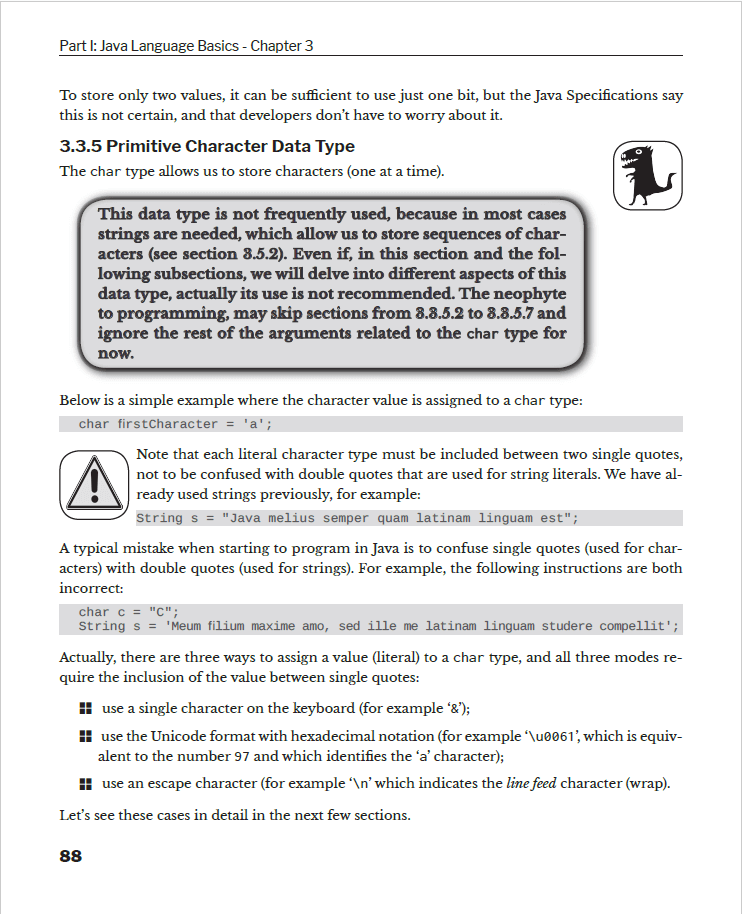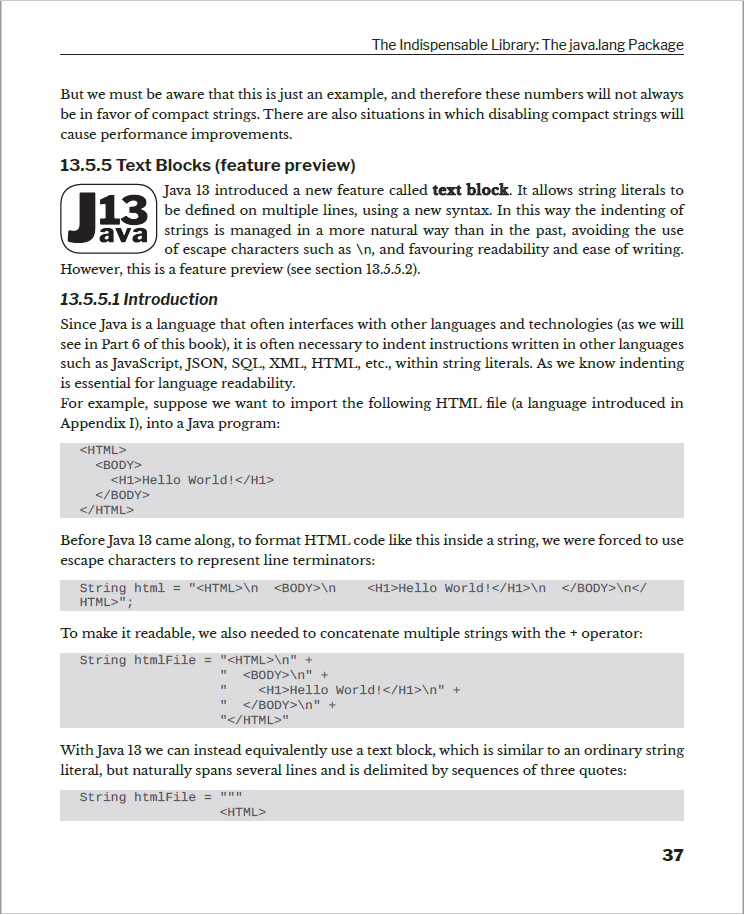Learn Java the easy way
Start from scratch and become a Pro!
- Student or
newbie? This book is perfect for you!
Java is explained in a clear and simple way, impossibile to fail! - Speed up your
career, thousands of people already did it!
Previous versions of this book were bestsellers in Italy - Best choice to
become a Java professional
Proven method, complete coverage, great value, small price
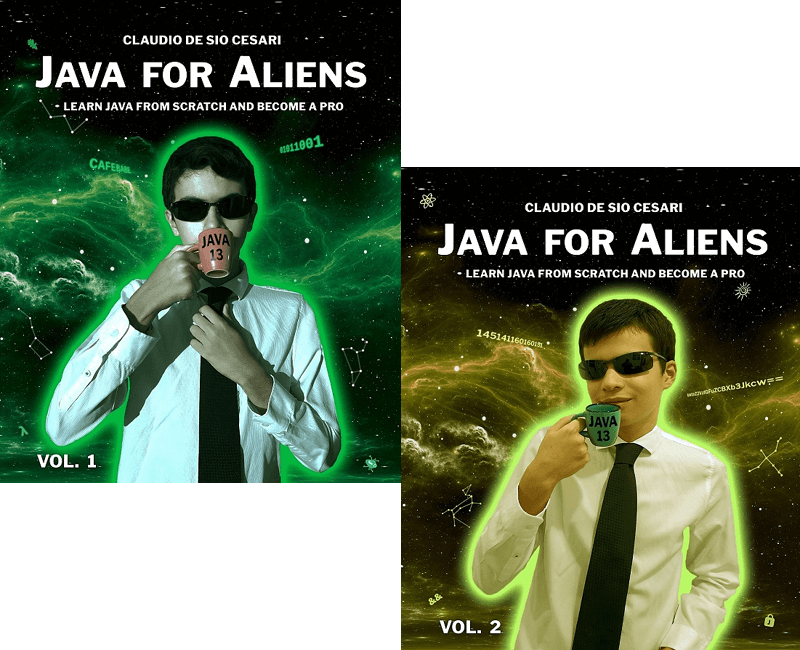
This is all you need
Java for Aliens comes with over 1000 pages in two volumes, about 900 free pages on line, with over 500 exercises and 15 appendices.
Just follow the path
Structure, writing and contents have been chosen carefully. Topics are presented as to be stimulating, never boring and to reach the goal.
Already know Java?
Sure? What about modules, lambdas, streams, intersection types, var, switch expressions, text blocks, annotation types, JLink and shebang files?
The Author
Claudio De Sio Cesari is a best selling author in Italy from 2006, with a vast training experience with Sun Microsystems and Oracle.
Not sure yet? Need more information?
Scroll down and read about the author, the abstract and the TOC, see the trailer and the gallery, download free sample sections, appendices, source code and exercises, connect with social media.
1082
Pages (Two Volumes)
833
Extra On-Line Pages
624
Exercises with Solutions
2078
Code Samples
Abstract
Java for Aliens is structured in such a way as to facilitate the learning of the Java language (Version 13), even for those who have never programmed. The structure, writing and contents have been chosen carefully, based on the experience the author have accumulated as a trainer and mentor over a twenty-year career. In particular, for Sun Microsystems, for Oracle, and as a freelancer, he had the opportunity to deliver hundreds of courses, for thousands of learners, on Java and related technologies, architecture, object-oriented analysis, design and UML. This book also covers complex topics that even the most experienced Java programmers might not master. These topics are marked with appropriate icons to warn the reader about the frequency of use, complexity and importance. This two-volume book represents an evolution of the most popular book on Java in Italy, which since 2006, has been recommended as a reference book in all the most important Italian universities. The 'Java Manual', (published by Hoepli), boasts the highest number of reviews on Amazon Italy compared to all other programming books, even those of the most popular international authors.
Java for Aliens - Volume 1 [Table of Contents]
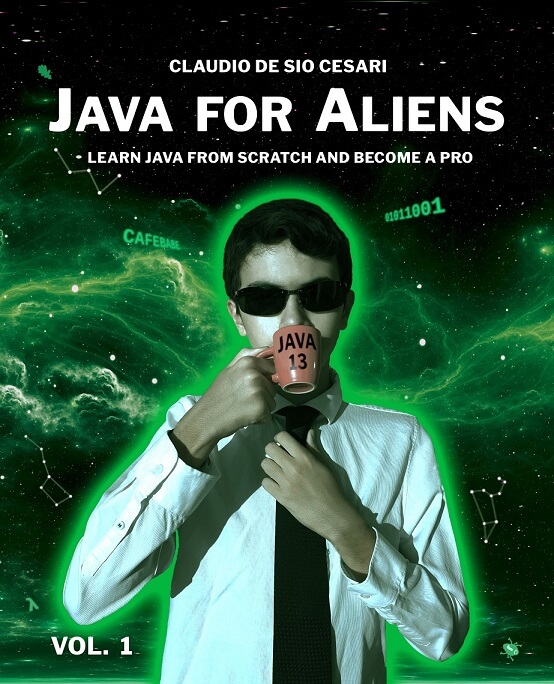
Chapter 1: Introduction to Java
Chapter 2: Key Components of a Java Program
Chapter 3: Coding Style, Data Types and Arrays
Chapter 4: Operators and Execution
Flow Management
Chapter 5: Real Development with
Java
Chapter 6: Encapsulation and Scope
Chapter 7: Inheritance and Interfaces
Chapter
8: Polymorphism
Chapter 9: Exceptions and Assertions
Chapter 10: A Guided Example to
OO Programming
Chapter 11: Enumerations
and Nested Types
Chapter 12: Generic Types
Java for Aliens - Volume 2 [Table of Contents]
Chapter 13: The Indispensable API: the java.lang Package
Chapter 14: Utilities API:
java.util package and Date-Time API
Chapter 15: Thread Management
Chapter 16:
Annotation Types
Chapter 17: Lambda Expressions
Chapter 18: Stream API and Collections Framework
Chapter 19: Modules
Chapter 20: Input-Output
Chapter 21: JDBC
Chapter 22:
Java & XML
Chapter 23: GUI (AWT & Swing)
Chapter 24: Introduction to JavaFX
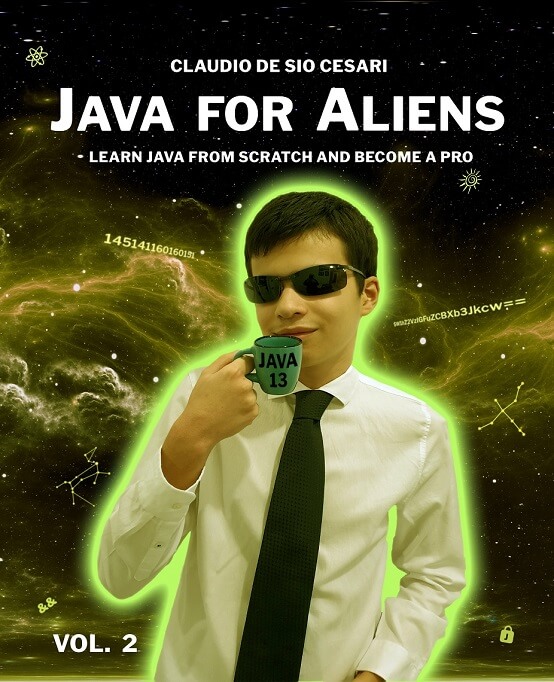
Download Sample Sections of the Book
Here you can download some sample sections of the book. You can see how it is organized, how the concepts are exposed, and you can find new syntax and features, Java is evolving quickly! You can find also some old features, that maybe you've never seen, though you are already a skilled developer. Please also note how the page layout is designed to not waste any space, and how the icons (described in the preface) improve learning.
APPENDICES
A) Brief History of Java
B) JDK Installation Notes
C) Command Prompt
D) Design
Patterns
E) Classpath
F) Introduction to UML
G) UML Syntax Reference
H) Introduction
to XML
I) HTML & Applet
J) Legacy Code Compilation
K) Apache Derby
L) JavaFX Installation Notes
M) EJE
N) Easter Eggs
O) Bibliography
EXERCISES
This file contains all the exercises (and their solutions) in the book and must be
considered an integral part of it. It was decided to provide the exercises as PDF file, only
to not add (currently) 724 pages to the of the book, and consequently limit its
price.
You will create brief programs to satisfy requirements, large programs to be
built step by step, answers to true-false questions, multiple choice questions, theory
questions, complete with
missing code classes and methods, draw UML diagrams to design algorithms and architectures.
Currently, there are about 500 exercises!
SOURCE CODE
Here you will find all the source code files included in:
- Book Volume 1
- Book
Volume 2
- Appendices
- Exercises
- Solutions
Are also included other fundamental files like:
- XML
based files
- Batch files
- Properties files
- Images and resources
- SQL
Scripts
- The total number of source code files is 2078

Dr. Claudio De Sio Cesari
Since 1999, I have worked as a freelance IT consultant.
Today I am a specialist in training, technical writing,
development, analysis, design, architecture, Java
technologies and object-oriented methodologies. I am the
author of several technical articles
and the 'Manuale di Java' series from Version 6 to 9,
Italian bestsellers, all published by Hoepli. I have worked
with several universities, ministerial authorities and IT
companies including Sun Microsystems, as a trainer
and mentor. Today, I mainly work as a Java Trainer for
Oracle.
You can follow (or contact) me using the following links:
